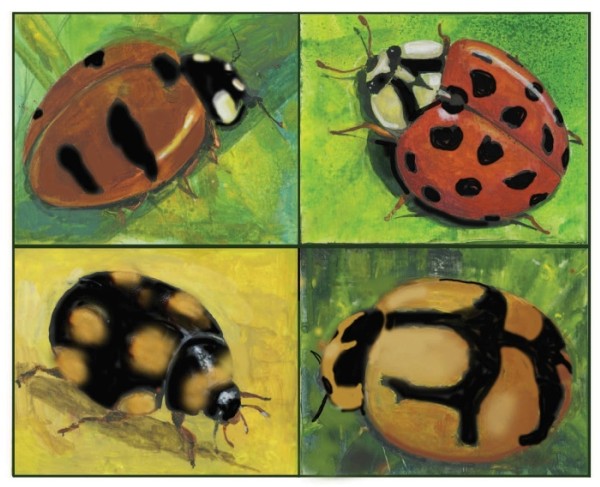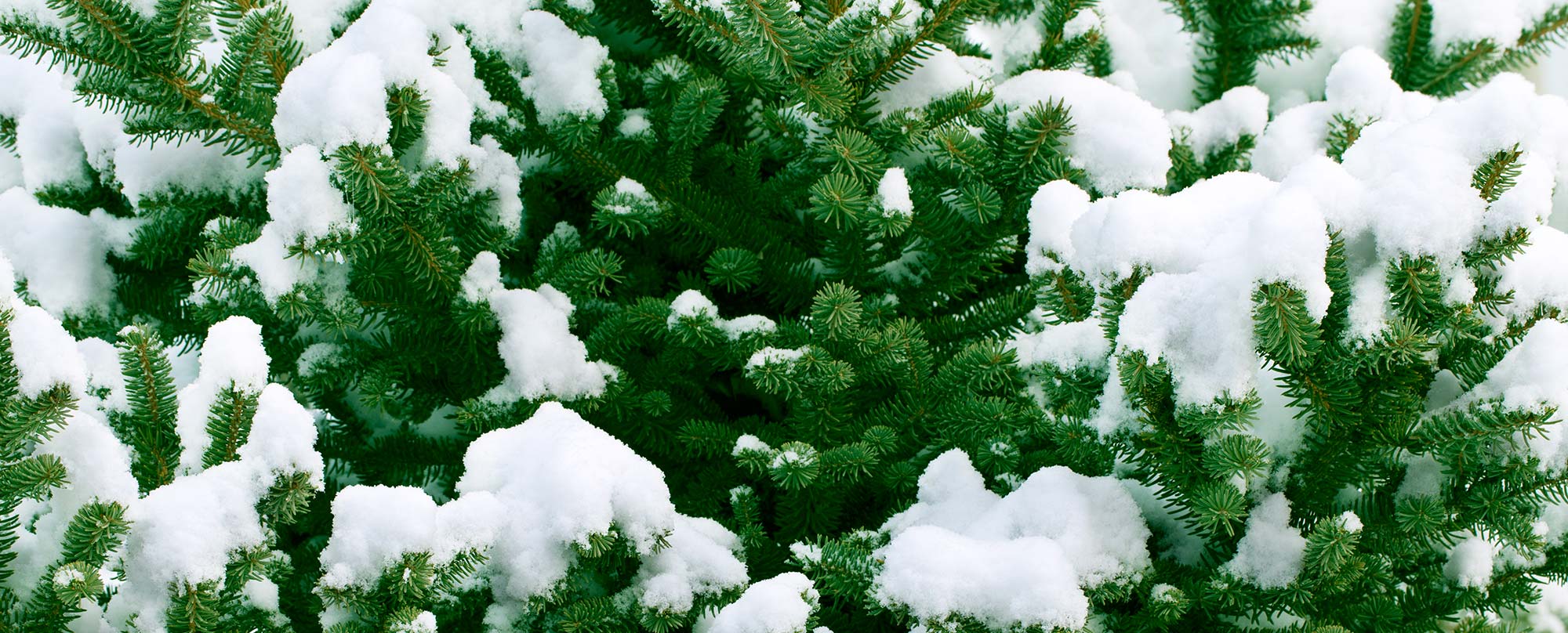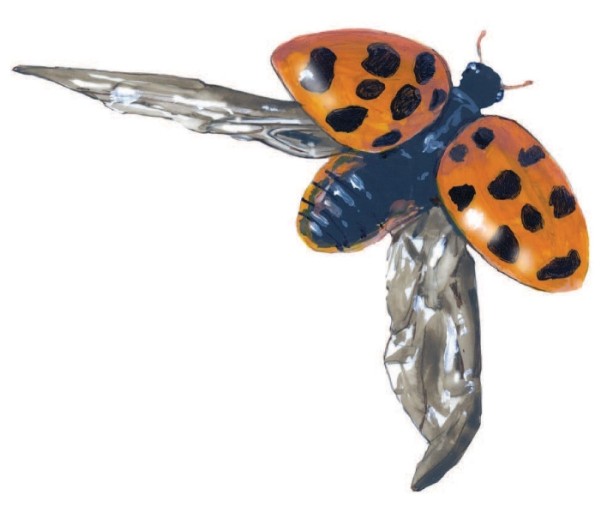
During our first autumn in Westford, Vermont, a wave of ladybugs attempted to make our home theirs for the winter. My wife expressed concern that our toddler might eat one. I replied, “Well she’ll only eat one.” And I quickly learned an important lesson on tact.
My flippant response was, however, true. The familiar “ladybugs,” “lady beetles,” or “ladybirds” (order Coleoptera, family Coccinellidae) exude a yellowish cocktail of alkaloids that most predators find unpleasant. Once “educated” by a first taste of these brightly colored beetles, predators – including curious toddlers – form a long-lasting food aversion.
Most ladybug species are voracious predators, serving important roles in keeping aphids and other plant pests in check. Gardeners are well aware of their value, and some species’ common names, such as “mealybug destroyer” and “spider mite destroyer,” could well have been dreamed up by a PR agency.
Because of ladybugs’ reputation as pest consumers, people have spread many species beyond their natural ranges, including across and between continents. But before you rush out to purchase a batch for release in your garden, it’s worth knowing that the adult beetles often sold for pest management don’t eat nearly as many pests as their larvae do, are likely to quickly disperse from their release site, and have little proven impact. Instead of seeing your purchased beetles chow down on garden pests, you’re more likely to watch them flip up their colorful elytra like a pair of hinged car trunks, unfold wings from beneath, and fly off to new adventures.
Some of those adventures may be in your home. The beetles swarming into the nooks and crannies of houses are usually multicolored Asian lady beetles (Harmonia axyridis; and yes, they are a ladybug species). They are also sometimes called “Halloween beetles,” most likely because of the month that they often show up in our homes.
There’s a saying that “a ladybug cannot change its spots,” but multicolored Asian lady beetles are an exception. This species has diverse patterns ranging from all black to all red with many spotted combinations in between these extremes. Behind the head, the pronotum is white and often has a black M-shaped marking. But even that marking is variable. Whatever their markings, although they may nip if sat upon, Asian lady beetles are really more nuisance to homeowners than cause for alarm.
This species and others may, however, negatively impact native ladybug species – which is a second reason not to introduce purchased insects to your garden. Entomologists have noticed declines in several native ladybug species coinciding with the expansion of Asian lady beetles. While correlation does not equal causation, competition for food may influence declines of native populations.
Since 2008, Cornell University’s Lost Ladybug Project, a collaboration between professional and community scientists, has documented ladybugs across North America to determine which species are still here. The results of this work so far have included the rediscovery of the nine-spotted ladybug (Coccinella novemnotata) and two-spotted ladybugs (Adalia bipunctata) in New York State.
Similarly, in 2020, the Vermont Center for Ecostudies launched the Vermont Lady Beetle Atlas as a component of its Vermont Atlas of Life. Fully one-third of Vermont’s 36 known native ladybugs had not been recorded in Vermont’s insect collections since the 1970s, and the project goal is to document current species in the state. Careful scrutiny of historical records from decades past, as well as of more recent iNaturalist and BugGuide.net photographs, have borne fruit: the Hieroglyphic Lady Beetle (Coccinella hieroglyphica kirbyi) had not been documented since 1969 but showed up again in 2017, and the Undoubtable Lady Beetle (Brachiacantha indubitabilis), Mountain Lady Beetle (Coccinella monticola), and Octavia Lady Beetle (Hyperaspis octavia), were recorded in Vermont for the first times in, respectively, 2014, 2017, and 2020.
These projects are important because we have little hope of protecting species if we don’t know that they have recently existed in an area, or where they may still exist. They can also lay the groundwork for species reintroduction efforts. For example, I recently heard from Leslie Allee, a research associate at Cornell University, who along with collaborators is “ranching” rare native nine-spotted lady beetles on a farm, for the purpose of reintroducing the beetles to upstate New York. This work, informed by the Lost Ladybug Project, may lead to the reestablishment of several nine-spotted lady beetle populations across the state.
As I write this, the Lost Ladybug Project includes more than 39,000 records and the Vermont Lady Beetle Atlas has more than 7,000 observations. You can participate in either project by signing up for a free iNaturalist account and snapping observations on your smart phone. Late spring is a good time to start looking for these insects. By May, you can find a diversity of lady beetles outdoors. And I do recommend getting outdoors to gather your observations, because we already know which species is sharing your house. For what it is worth, my daughter managed to make it through early childhood without ever partaking of “lady beetle on the hoof”… as far as I know.


